UFO crash near Kingman in Arizona. Truth or fiction?
The story of the crash of the discoid apparatus, which, they say, happened near Kingman in Arizona, could be ignored if it was told by one eyewitness. Being first published by Raymond Fowler in the Official UFO magazine for April 1976, this story seemed to be one of those that lead nowhere. Without any confirmation, it would be impossible to digest. Fowler, however, considered the eyewitness's story worthy of attention, because he personally interviewed him, received a signed affidavit and several other documents confirming his words. The evidence was not very weighty, but it existed; this moved Fowler further than most researchers who dealt with stories about UFO crashes, where there was only one witness.
The first eyewitness interview was conducted on February 3, 1971, by Jeff Young and Paul Chetham, two young people who were interested in UFOs. To be more precise, an article that appeared on the pages of Middlesex News (Framingham, Massachusetts) said that a teenager who is writing a book about UFOs for young readers. The newspaper said that Young managed to interview a man who said that he worked in the US Air Force project to study UFOs "Blue Book" and came into contact with UFOs.
According to Young, an eyewitness, to whom Fowler later gave the pseudonym "Fritz Werner" to ensure his anonymity, was at the crash site of a flying saucer about twenty years ago. Werner told about himself that he is a professional engineer, has scientific degrees in mathematics and physics.
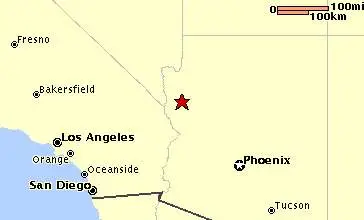
During the interview, Werner first told about how he just watched a UFO during one of the atomic tests in Nevada. He and his colleagues were drinking beer when they heard a humming, whistling sound and ran outside. The UFO flying in their direction hovered for a while, but they could not see any details, it was already dark.
Werner said that he worked in the Blue Book project. He suggested that the project was created because the work of the Air Force on the study of UFOs "received too much publicity, and besides, there were too many people not from among the officials who saw and reported about them."
When Young and Chetham finally asked about the UFO crash in Arizona.
The object clearly, as far as we know, was not built on Earth. It was in 1954 [actually in 1953]. At that time, I did not take part in atomic tests, but I was still on the staff of the US Air Force and the Blue Book Project. When it was reported that an unknown aircraft crashed in the west, they organized a team of about forty people. I was one of them.
Fritz Werner said:
According to Werner, he was informed "through official channels and via a personal telephone line from the commander of the Wright Field Air Force Base [more precisely, Wright-Patterson. k. R.]. We were told that we, the participants of the Blue Book, should take a plane to Chicago in the morning and from there to Phoenix."
Werner said the UFO crashed about 25 miles from Phoenix. It was 12 feet long, virtually intact, "more like a drop-shaped cigar, a streamlined cigar." It was made of a dull substance that Werner had never seen. Young mentioned that he had heard stories about a UFO that crashed in Arizona and that someone had told him that he had photographed an alien in a silver spacesuit.
I saw the creature you're talking about. It actually was; in my opinion, it was about four feet tall
Werner replied:
According to him, the creature was dark brown; Werner suggested that its skin could have darkened due to exposure to chemicals in the Earth's atmosphere. Fritz saw that he had two eyes, nostrils and ears. The lips looked as if they served "only for food," although Werner did not explain how he knew this. Fritz could not really see the alien: he saw the body at the moment when the military was already dragging him into the tent.
After leaving the crash site, Werner did not stop dealing with UFOs. In the second part of the interview, he stated that he later came into contact with other creatures from the "saucers", that is, it seems that he not only saw the alien's body but also communicated with other, living aliens.
Here we enter an area where you can only take my word for it because I can't prove it.
He said:
Raymond Fowler, who read this story in the newspaper, at first thought it was just another crazy story. However, after several calls from friends about Werner's story, he decided to sort it out. Fowler called an eyewitness and personally interviewed him.
What Werner told Fowler was slightly different from what he told Young. At that time, none of the changes made by Werner seemed significant, and most of them could be explained as ordinary inaccuracies in the course of retelling the same story. However, some of what he told was more shocking.
According to Werner, he was working in the area of Frenchman Flats, Nevada, when his boss, Dr. Ed Doll, called him and told him about the upcoming special assignment. At Indian Springs Air Force Base (north of Las Vegas), Fritz Werner boarded a plane and flew to Phoenix. There he was put on a bus together with other people who had already gathered. They were warned not to talk to each other and were taken to the northwest, into the desert. The windows of the bus were taped so that the passengers could not see exactly where they were being taken. Werner believes they drove for about four hours until they arrived in an area near Kingman, Arizona. By the time they reached their destination, it was already night. The bus stopped, and they began to be called one by one. Although they were ordered not to talk to each other, the officer called passengers to the exit by their last name. This could give everyone who took part in the operation an opportunity to learn more about it, returning to their normal official duties: now they knew the names of other passengers and could track them down. Such a strange way of ensuring secrecy seems to me a big failure. He became the first of the problems in connection with this case.
Werner was escorted from the bus by military police. Two spotlights illuminated the object, which looked like two deep plates docked at the edges. It was about 30 feet in diameter, with a black band encircling it in the center, made of a dull material resembling polished aluminum. Werner estimated the ship's weight at about 5 tons. There were no landing devices visible from below. There was no visible damage, although the ship was buried in the ground. Werner did not notice any dents, scratches, or marks on its surface.
The only signs of the crash were footprints on the desert ground and the fact that the hatch seemed to have opened due to the fall of the ship. Werner said that the hatch was curved, and the inside of the device was brightly glowing, but the light could also come from lighting conducted there by the military. Werner made the necessary calculations, including measuring the furrow dug by the UFO in the sandy soil during the fall, the characteristics of the soil during compression, and an approximate estimate of the weight of the ship. He calculated that the ship was flying at a speed of about 1,200 miles per hour at the time of the collision with the earth.
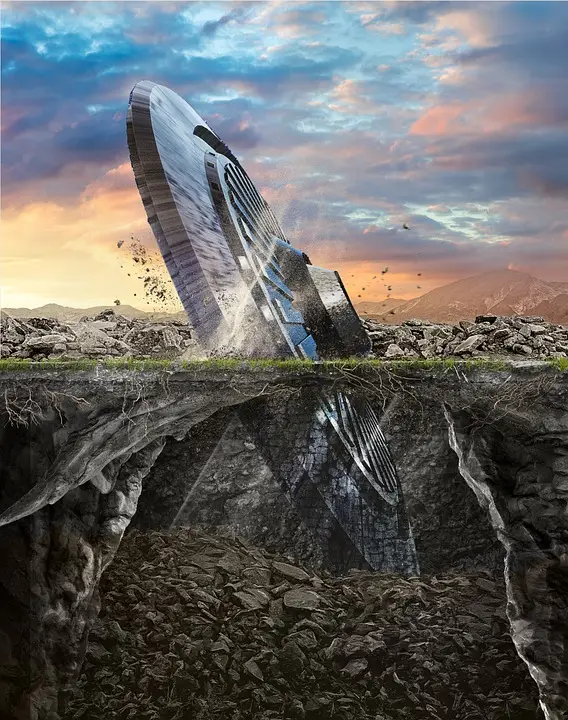
When each of the specialists finished inspecting the ship, he was interviewed, recording everything on a tape recorder, and escorted back to the bus. None of them were allowed to listen to Werner report on his research; he was also not allowed to hear what others were saying. Before going to the bus, Werner saw a tent guarded by an armed military policeman. It contained the body of a four-foot-tall humanoid creature. The body was dressed in silver clothing with a tight-fitting "cap", which, covering the entire back of the head, left the face open and unprotected. The skin of the face was dark brown, but again Werner explained that the coloring could have been caused by exposure to terrestrial air or appeared due to a crash. On the way to the bus, Werner was able to talk to one of the specialists. Tom happened to look inside the ship and saw two seats, seemingly rotating, instruments and screens. However, before Fritz found out more about this man, one of the sentries noticed that they were talking and separated them, warning them not to exchange impressions. Everyone on the bus took an oath of secrecy. Then, after returning to Phoenix, they started their usual work.
Werner provided a long track record, including references to his scientific education and a list of publications on professional topics. All this suggested that Werner, a highly qualified engineer, would hardly harm his reputation by inventing hoaxes about UFOs. However, since he did not want to disclose his real name, it can be argued that he did not risk anything in this way. (Now the real name of "Fritz Werner" has become public. His name is Arthur G. Stancil M. G.).
In a report written by Fowler for the ufo organization NICAP, a number of discrepancies were recorded between what Werner told him and what he told Young during the first interview. The main one turned out to be that Werner first described the object as looking like a teardrop-shaped cigar with a flat bottom, 20 feet long and 5 feet high. In an interview with Fowler, the object became disc-shaped, 30 feet in diameter and about 20 feet high.
When I pointed out this contradiction to an eyewitness, Fowler writes, for the first time he began to look agitated and said that he described to the boys in a similar way another object that he had seen in Greenland, over Tula. Then I reminded him that he had described to me the object above Tula as a black disk seen in the distance. He insisted otherwise until I got a copy of the transcript of the interview; it clearly showed that he was describing a crashed UFO to the boys, and not an object over Tula. Then he backed down and confessed that he had lied to the boys. He said that the description given to me was true since I was actually conducting serious research in this area. In my opinion, this is the most significant and discrediting contradiction in the testimony, which does not have entirely satisfactory explanations
Quote:
There were other discrepancies between what Werner said to Fowler and Young and Chetham. Most of them can be attributed to imperfect memory or, as Werner himself presented the case, to exaggerations in his story to the boys. He didn't want to deliberately mislead them, he just wanted to tell them a good story. Werner provided Fowler with a page from his desk calendar dated May 20 and 21, 1953.
It seems to partially confirm his story.
On May 20, So, the ink in the pen runs out. I spent most of the day on Frenchman Flat, inspecting cubes and watching the welding of the mast plate of the shunt sensor, which cracked due to the last explosion. I had a beer in the evening. I read it. I received a strange call from Dr. Doll at 10.00. I'm going to a special job tomorrow.
The entries read:
The only interesting place here is an indication of some special work received from Dr. Doll. This entry, however, can point to anything.
May 21. Got up at 7.00. Worked most of the day with cubes. A letter from Beth. Thank God she's feeling better now. I was taken to Indian Springs Air Base at 4.30 pm for work that I can neither write about nor talk about
The following entry reads:
And again, there is nothing here that could suggest Fritz Werner's participation in the story of the crashed UFO, only that he received some special task. Again, it seems strange that he could have made a record of his participation in a secret project on the pages of an unclassified desktop calendar. To Fowler's credit, he tried to verify everything possible in this story. He tried to find out if Werner really worked in the Blue Book project. In his report for NICAP, Fowler said that he had spoken with Devay Fournet, a former Pentagon officer in charge of the project. Fournet said he did not know the name of the eyewitness, but he did not remember all the consultants involved in the project. Since this did not give anything, Fowler contacted Max Fatch, who was temporarily in charge of the Blue Book project. According to Fatch, he knew all the consultants of the project, but he does not remember that Werner was among them. On the other hand, Fowler called three of Werner's friends to find out about him as a person. They all said the same thing: Werner was a good engineer and a reliable friend, he never lied or exaggerated.
However, knowing about the differences between the two interviews, Fowler remained in his doubts. On May 25, 1973, he came to Werner's office to discuss these differences with him. Werner explained that the difference between the interviews arose due to the fact that he mixed up the dates and only then checked them in his diary. In addition, he drank four martinis while talking to the boys. "Under the fly" he, they say, is inclined to exaggerate everything. Fowler checked to see if Werner was drunk that day; Young said that Werner had only had one beer with him. Of course, Werner could have drunk four martinis before the guys came, and with them only "polish" the beer he drank. That's not the point: what he said undermines Werner's credibility as a witness. Although his friends stated that they had never noticed his tendency to exaggerate, he himself admitted to the contrary that he exaggerated the facts under the influence of alcohol.
William Moore, co-author of the book "The Roswell Incident", during a speech at a symposium of the ufological organization MUFON in 1982, said:
Fowler's informant, known under the pseudonym "Fritz Werner" (his real name and some details of his service record are known to me), stated that on the evening of May 20, 1953, he received a call from his boss, Dr. Ed Doll, who said that the next day Werner would have a special job. When I asked Fowler if he had checked this part of the story with Dr. Doll, he said that his attempts to track down Doll had been unsuccessful
Quote:
In fact, in his report, Fowler writes that the check showed that there was a real person who worked at the Atomic Energy Commission and at the Stanford Research Institute. It did not seem that Werner dared to name a person to confirm his story, who could, if he were found, immediately refute it.
Moore said it took him only four days to find Doll. On October 9, 1981, they met. Moore asked about the incident near Kingman, and Doll said he didn't know anything about it. Then he asked a question about Werner, using his real last name.
I do not know what to do next with this story, Moore concluded the discussion of the incident, since my investigation led to nothing but dead ends. I prefer to spend my time studying more fruitful topics
Quote:
Moore's only blunder was to claim that Fowler's informant had a distinctive surname. Last year, I received a signed copy of his affidavit, along with a track record and a full analysis of the case conducted by Fowler. In other words, I know Werner's real last name, and there is nothing characteristic about it. This means that Moore's statements about the incident may be groundless. Leonard Stringfield found another eyewitness who confirmed part of the story about the crash near Kingman. In his monograph "Retrievals of the Third Kind" it is told that, according to ufologist Charles Wilhelm from Cincinnati, a military man has known only as "Major Daly" told Charles' father that in April 1953 he flew to an unknown place to study the remains of the crashed "saucer". He was blindfolded and brought to a hot sandy desert. Inside the tent, the bandage was removed, and the major was taken to another place. There he saw a ship with a diameter of 25-30 feet. He didn't see any damage. The major spent two days studying the metal of the ship, which, according to him, was extraterrestrial.
Dali was not allowed to enter the ship, although he noticed that a hatch 4-5 feet high and 2-3 feet wide was open. When he finished the tests, he was taken away from the crash site under guard. The information from Major Dali does not exactly match Werner's story, but it is close enough to him. She seems to be giving us some confirmation of the story of the UFO crash near Kingman. The real problem is that Daly's story was obtained by us from third-hand sources and its original source is not available for independent research.
Even more information of this kind about the crash near Kingman came from Wright-Patterson Air Force Base. A woman who worked in a Parachute Unit (WCEEH-1) said: a sergeant with a special permit required to enter their offices said that he had recently flown in from the southwest of the country where a UFO crashed. Looking back many years later, she thought the sergeant was talking about a UFO crash near Roswell, but checking her records showed that she started working at the airbase in the early 50s. In the course of further research, I came to the conclusion that the case she recalled occurred in late 1952 or early 1953.
The sergeant told everyone who was in their small office that they had brought the bodies of aliens. Naturally, no one believed his word the sergeant's story was too incredible. However, an hour later, the commander of the airbase, Colonel Pratt S. Brown, came to the office. He stated that the story told by the sergeant was just fiction and a rumor and that no one should spread such wild nonsense further. The colonel brought with him official non-disclosure subscription forms and forced them all to put their signatures, explaining that they should not repeat to anyone what the sergeant said, otherwise they would face twenty years in prison and a fine of 20 thousand dollars.
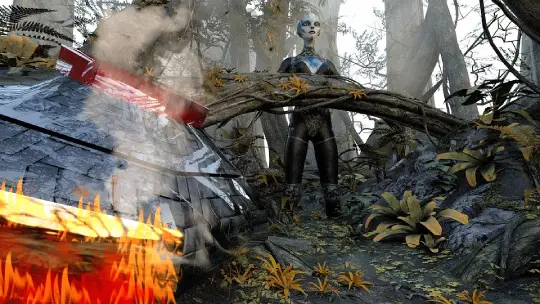
The problem is that the secretary does not remember the exact time when it happened, nor the place where the UFO crashed. In order to somehow connect her story with Kingman, we must resort to conclusions based on very limited documentation about her service at the airbase. The only report of a UFO crash that fits the established time frame is a case under a Movie Fan, but still, the connection between these events is extremely weak.
The cinematic incident could easily have been written off, especially given the problems with Werner's testimony, if not for another source of information discovered by Don Schmitt. Studying the phenomenon of abductions aboard UFOs, he learned that Judy Walcott's husband wrote her a strange letter from Vietnam in 1965, believing that he would not return to his homeland alive. As far as she remembers, it said that twelve years ago he saw something strange. Judy believes that it happened in August 1953, and although she may be mistaken about the month, she is sure that it happened near Kingman. Her husband, a professional officer, was on duty at the airbase control tower. They noticed an object on the radar screen, which began to lose altitude and disappeared from the screens, and then a bright white flash flashed in the distance.
Woolcott wrote that the military police began to talk about something falling. He and most of those on the tower left the base in jeeps in the direction where the outbreak occurred, inspecting the area. Suddenly they saw a disk with a dome that crashed into the sand. There was no noticeable external damage on the disk, and there was no debris on the ground. Before they could do anything else, a military column appeared. Woolcott and his companions were stopped before they could get closer to the disk. They were ordered to turn around and escorted back to the base under guard.
There they were told that nothing had happened, and they had not seen anything. They had to take an oath of non-disclosure. Woolcott didn't give many details. It seemed to him that the ship did not fall due to any external reasons. He did not see the bodies, but there was talk about them at the base: some military policemen said that the dead were not people. Woolcott made it clear that he had not seen the bodies and had only heard talk about them. The letter showed that he knew more, but did not want to write about it. And about a week later, Judy found out that her husband had been murdered. She didn't know anyone connected to the incident who could tell her anything else about it.
Although the time of the incident was slightly shifted, it is interesting that Judy was clearly sure about his place. Schmitt said that during the interview he was amazed when she called Kingman, as he was thinking about calling Ray Fowler after talking with Judy. The Kingman case has ceased to be a story based entirely on the words of one eyewitness with a dubious reputation. The fact that nothing about the crash was printed in Kingman's newspaper, as Moore pointed out in 1982, may not be relevant. The search I conducted in the Las Vegas newspapers also yielded nothing, but if the detection and removal of UFOs was a military operation, without the participation of civilians, including as bystanders, the fact that nothing was written about it in the newspapers can not matter much.
The military could keep the whole story a secret, preventing its disclosure. Now that we have two independent sources of information leading to Kingman, maybe it's time to reconsider this case. Interestingly, Werner talked about a different date until he checked his desktop calendar, eventually pointing the researchers to another month. Major Daly and Woolcott also talked about different months, but the year and place indicated the same, which corresponds quite closely to our case. However, there is still not enough evidence and documentation on the Kingman case. The only first-hand witness may have told us a fictional story that grew like a mushroom after it was published in a local newspaper. We have two independent sources confirming this information, but in both cases, their story reached us second-hand. But, despite all its shortcomings, the Kingman incident still looks much better than most UFO crash stories.
Without additional information and additional confirmations, including "first-hand", there is little we can add to this. However, given what we already know about him, the incident deserves more attention at least we should try to confirm some of its details or prove that it was a hoax.
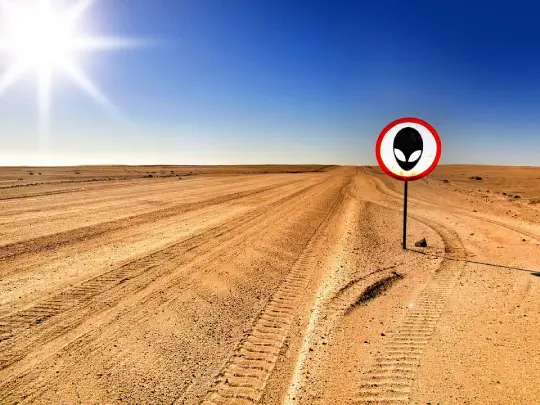
Source: Randle, Kevin. A History of UFO Crashes. NY, 1995, p. 57-68 R. S. There are three other independent confirmations that Randle does not mention. In 1964, ufologist Richard Hall heard a second-hand story about a UFO crash that occurred in 1953 in the Arizona desert. His informant, the future commander of the unit in Vietnam, was "not like a liar": he said that the Air Force officer who instructed them mentioned an incident after which four small bodies were picked up. After speaking to a group of pilots in Cincinnati in 1977, Leonard Stringfield, who studied UFO crashes, heard the story of a former warrant officer, who by that time was already an aviation squadron commander in the National Guard.
One night in 1953, when he was stationed at Wright-Patterson Air Force Base, a DC-7 plane brought five crates. From a distance of about four meters, the warrant officer looked into three of them and saw that in each of them was a 4-foot-tall (1.2 m) humanoid body lying on a cloth covering a layer of dry ice. The creatures' skin looked brown, and their hairless heads were narrow, disproportionately large.
The eyes were open, the nose was small, almost indistinguishable. One body, which had what the eyewitness took to be breasts, was apparently female. An eyewitness said that he learned from the crew of the plane: one creature survived the fall but died soon after. The UFO crash allegedly occurred in the Arizona desert. In 1995, a man who took the pseudonym "Jarod-2" told the online publication "The Groom Lake Desert Rat" that he worked in the US Air Force on a secret project during which the military tried to create a copy of the "flying saucer". The project was founded in the late 40s and had items from the UFO crash sites under Roswell and Kingman. Despite all the vagueness of these testimonies, they are the ones that leave the question open.
About author:
Serg Toporkov Ufologist, Ph.D., blogger, I go on my own expeditions for UFOs. I use scientific methods to investigate the UAP phenomenon. Write to me |
Related tags:
UFO crashed Kingman Arizona USA truth fiction UFOs flying saucer disc-shaped 1953 extraterrestrial abductions caseRandom UFO or conspiracy article
Legends of six-fingered aliens
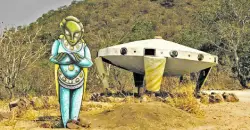 Sheaves of light plunged into the lake, and then rose high into the sky - the Indians passed this legend from generation to generation. Traces found in the caves of a remote area of Brazil strangely confirm the legend of six-fingered undersized aliens.
Sheaves of light plunged into the lake, and then rose high into the sky - the Indians passed this legend from generation to generation. Traces found in the caves of a remote area of Brazil strangely confirm the legend of six-fingered undersized aliens.
